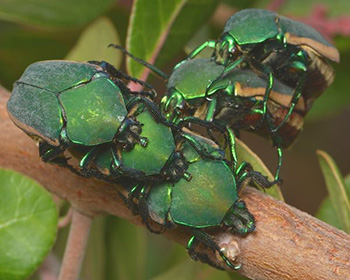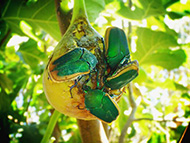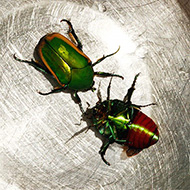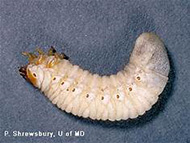Figeaters Compete With Fig Eaters
Figeaters Compete With Fig Eaters
By Bill Willis

(Photo courtesy of UglyHedgeHog.com)
August 21, 2018
- Fig Eaters are sometimes called Green June Bugs since they’re metallic green and are seen in June
- Most of their life cycle is spent underground as grubs eating organic matter and roots of plants
- The grubs metamorphose and emerge in summer.
- They fly around very close to the ground in search of mates
- These beetles can be destructive if in high numbers
You either love figs or you just don’t, but to be named after a fig indicates a true passion for this fruit. This is the case with the fig eater (Cotinis mutabilis) that is emerging from the ground now. The menu includes figs, grapes, tomatoes, peaches, and plums; basically, any over-ripe fruit is a magnet for these beetles.
The adults are beautiful metallic green beetles that are generally tolerated unless present in large numbers in the garden or orchard where they can be destructive. The adult’s buzz sounds like a carpenter bee, but they are docile, active, and don’t bite.
The eggs are laid in an organic rich area where the grubs hatch and begin to feed on organic matter. As the grubs grow, they will also feed on grass roots, but are not the problem that Japanese Beetles are. The fig eater grub is about four times larger than the Japanese beetle grub.

(Photo courtesy of GardenBetty.com)

(Photo courtesy of FireflyForest.net)

(Photo courtesy of UMD)
As a small grub, the fig eater can form a tight “C” coil when disturbed, later it can travel by undulating movements on its back, thus the name " Crawly backs ". Pupation occurs locally in late June and emergence follows in July.
Bees and wasps will join the figeaters as more and more fruit ripen so be ready to compete with more than the birds.
Go Fig-ure!



